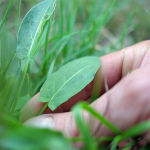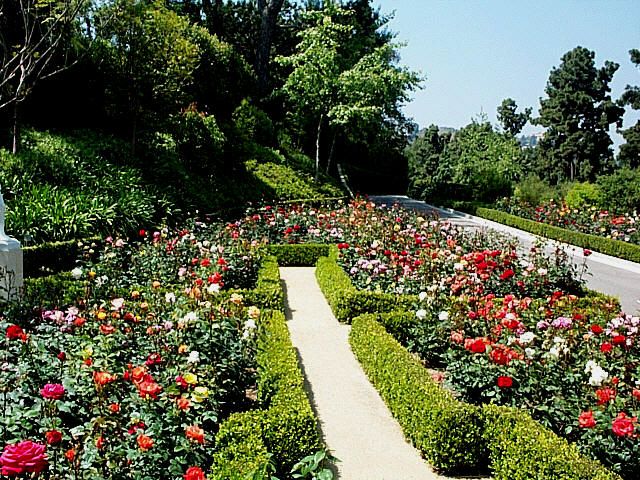 Last Sunday, much dissatisfaction was expressed on Crass by lawn-mowers. The people, not the machines.
Last Sunday, much dissatisfaction was expressed on Crass by lawn-mowers. The people, not the machines.
This is your chance to ask all your questions. I’ve maintained a bunch of lawns in a bunch of climates. Continue reading
 Last Sunday, much dissatisfaction was expressed on Crass by lawn-mowers. The people, not the machines.
Last Sunday, much dissatisfaction was expressed on Crass by lawn-mowers. The people, not the machines.
This is your chance to ask all your questions. I’ve maintained a bunch of lawns in a bunch of climates. Continue reading
Grass. No, not that kind. Or that kind. This kind. The yard kind. The prarie kind. The tall kind. The accent kind. Continue reading
Pantone declared that this is the year of green with their color of the year being PANTONE 17-5641 Emerald. This has led to a host of articles about incorporating it into your life in some surprising ways. Especially in pants, for some reason everyone is trying to make green pants happen. And shoes. I don’t get it, but that’s me. Continue reading
Let’s take a break from the pretty, and look at the practical. Everyone needs to eat, right? Let’s get into some heirloom or heritage vegetables for your garden. They’re tasty. Continue reading
Purple. It’s the color of royalty, one of the three colors of Mardi Gras, and one of the must have colors in any garden space. It can heat up a cool toned garden or cool off a hot toned garden. It works well as a wall color, but for me it shows its best face is when its attached to a plant. Here’s a list of 15 purple flowers and plants that you can add to your garden for some truly amazing results. Programming note: for this series, I am trying to feature new and upcomming hybrids and little used plants that people aren’t as familiar with as well as some of my personal favorite plants in the color theme. Continue reading

A frequent sighting in central Colorado’s festivals, farmers’ markets, and Earth Day events is John Anderson, “the worm man.” Happy to teach both children and adults the benefits of vermicomposting(worm composting) his mantra is “starve a landfill, feed a worm.”
I had the honor of meeting Anderson in person at a permaculture certification course at the Lyons Farmette in the spring of 2010. He showed up in his refurbished 1975 Dodge ambulance, now called the “wormbulance,” to teach us the finer points of vermicomposting. Continue reading

When most people look at the rangy, tenacious invaders in their lawns, gardens, and cracks in the pavement, they see a problem to be handled by digging, pulling, cursing, and spraying with herbicides. Weeds seem to follow us and insinuate themselves into every bit of disturbed soil and manicured garden imaginable. They are the bane of the perfectionist’s outdoor experience. But what if these invaders are, in fact, a vast, untapped nutritional resource?
Continue reading
Today’s question is: do you have any questions for this experienced home-gardener? Continue reading
Hybrid Tea Roses – A primer!
Hybrid Tea roses have a bit of a reputation as pampered princesses in the garden which require a lot of work. To some extent, this is true. However, with a bit of preventive care, any weekend warrior can enjoy the mesmerizing beauty of these wonderful flowers.
Why Hybrid Tea?
Flowers of early cultivars were said to smell of tea, though citrus and berry scents are very prevalent today. These roses are grafted onto a hardy rootstock. In the nursery, you will be able to see this as a small round knob (called a bud union) near the base of the plant. More on this when we get to actual planting.

Location / growth habit: full sun, and well-drained soil. They need to bake in the sun all day if possible, though 6 hours of full sun will produce a good result. Roses are usually planted in groups because this makes care easier. Roses do not like wet feet, so heavy clay soils will need to be amended to include some sand and organic matter. Sandier soils will require the addition of organic matter and plenty of mulch around the base of the plant. Tea roses grow from 3 to 6 feet in height. Generally, they produce one flower at the end of each stem and flower from early summer until fall.
Varieties: A few favorites of mine, which Dad had me plant at The Ancestral Family Split Level as a 30th anniversary gift to MomCrocker. We chose mainly vintage varieties for their proven performance and spectacular fragrance.
Mr. Lincoln – deep red, fragrant: http://www.rose-gardening-made-easy.com
Tropicana – coral, citrus fragrance: http://www.waysidegardens.com
Peace – pink, yellow… and historic! http://scvrs.homestead.com
Garden Party – white with faint pink and yellow – http://www.rose-roses.com
Queen Elizabeth – breathtaking clear pink – http://www.rose-gardening-made-easy.com
Midas Touch – sun yellow and citrusy – http://www.rose-gardening-made-easy.com
Medallion – deep apricot – http://www.heirloomroses.com
We added others later, but tried to give the garden a vintage style that fit the nearby slate terrace and the woods behind our backyard. A solar-powered small fountain attracts birds. Now, after 20 years of TLC, Mom’s roses are what draw people out of the kitchen during summer parties. This isn’t hers – we used lavender as a border – but it’s close enough to give you the idea.

So you’ve selected your rose, hopefully a container-grown sturdy specimen with dark glossy leaves. How to plant? In general, that bud union goes an inch or two below ground in places with harsh winters, and an inch or so above in temperate places. Your local nursery owner can help you decide. Put some well-rotted cow manure or compost in the hole along with a light application of fertilizer such as Rose Tone or Osmocote. Mulch your new charge with shredded cedar, keeping the mulch an inch away from the stem. And always water from beneath, keeping water off the leaves, lest ye get…
BLACK SPOT! Sworn enemy of tea roses, black spot can ruin an entire garden. It’s a fungal disease that attacks the leaves, eventually moving on to the stems and killing the whole plant. Dust-type fungicides are helpful, but you must attack this immediately if you see it. Any leaf with a yellow spot and a black center must be removed and discarded – never in the compost pile.
Another enemy is aphids, an insect which sucks the life out of the buds and new growth of plants. These are easily controlled with an dust-type insecticide. Organic types may wish to try manual removal (smush them like a Jersey Shore DTF’er) or by purchasing live ladybugs, but my experience is that ladybugs keep some alive and use them as “cows”, petting them with their little legs until nectar is secreted. Yuck.
Fertilize carefully and well, following package directions. Pull back the mulch, work the fertilizer gently into the soil with your fingers, water, then put the mulch back. Don’t fertilize too late in the season, as this will encourage tender growth which can be damaged by frost. Prune in late winter, removing any damaged canes or canes that cross each other. Aim for an open shape and remove no more than 50% of the old growth. (Note – some roses prefer a more serious pruning. Check with the grower.)
Companion plants: Some people like to plant a low border around their rose bed. I have found lavender to be excellent for this purpose, as it likes the same growing conditions and the silvery gray foliage and purple or white flowers are a nice contrast. Heather also looks good because it blooms way before the roses do. Low growing annuals such as Sweet Alyssum or Lobelia can provide summer color as well.
Try a Hybrid Tea in a sunny spot. You may be surprised at how easy they are and how prolific their flowers are.